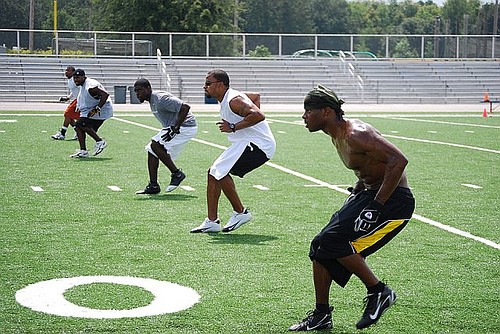
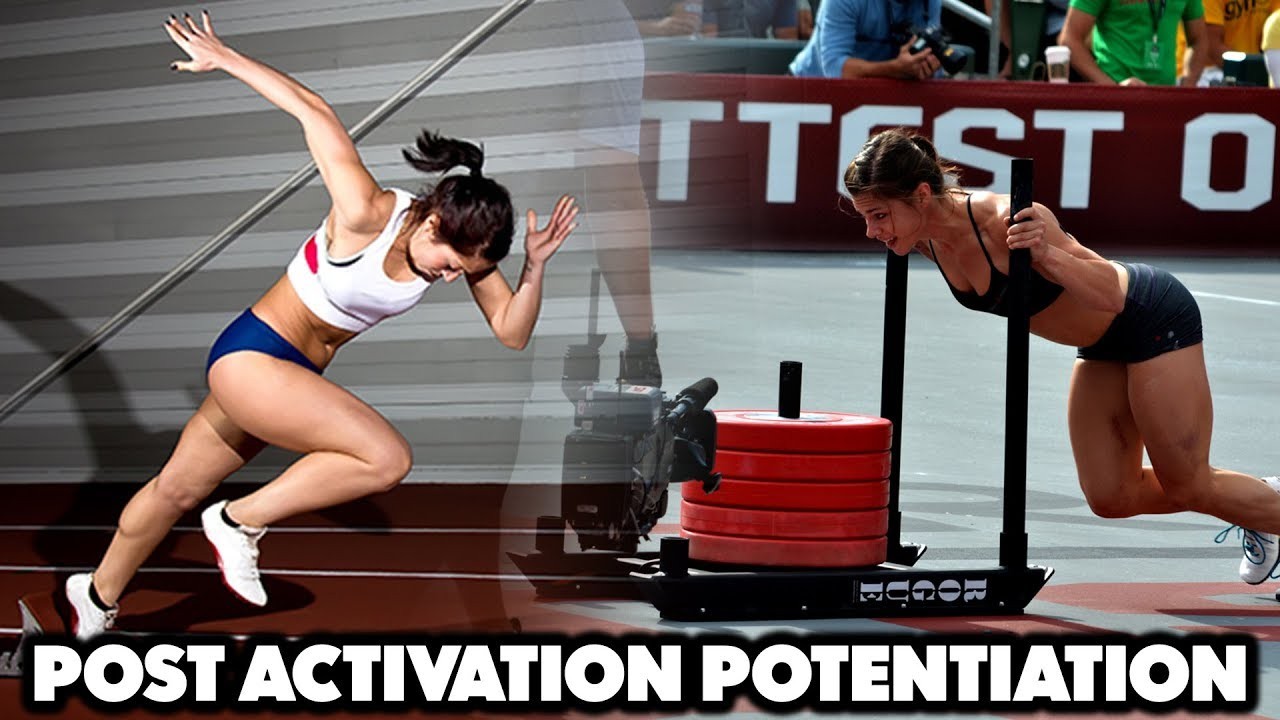
Introduction:
Rugby union involves quick bouts of high-intensity action including tackling, jackalling, sprinting, and agility followed by low-intensity activity (Baker, 2002; Gabbett et al., 2008). Modern Rugby Union emphasises pace and pressure with and without the ball. Teams that support the ball carrier, clear rucks and produce quick ball are more likely to prevail over a disorganised defence and score. Conversely, a team that wins the defence race and pressures the ball carrier might force a mistake or pressurise a ruck by jackaling or stealing the ball, resulting in a turnover. Speed is crucial in Rugby Union, and Post-activation Potentiation Enhancement (PAPE) has been utilised to enhance speed within the training environment.
What is PAPE:
PAPE effect is defined as an improvement in neuromuscular performance following a previous workout known as the conditioning activity (CA)
(Blazevich & Babault, 2019). In practice, the back squat comes before a biomechanically equivalent explosive activity vertical leap.
However, performance is improved following CAs that include a modified movement pattern accomplished using similar muscles. For instance,
bilateral power cleans or back squats are performed before sprints, which include repeated unilateral take-offs (Laurent B Seitz, Gabriel S
Trajano, et al., 2014).


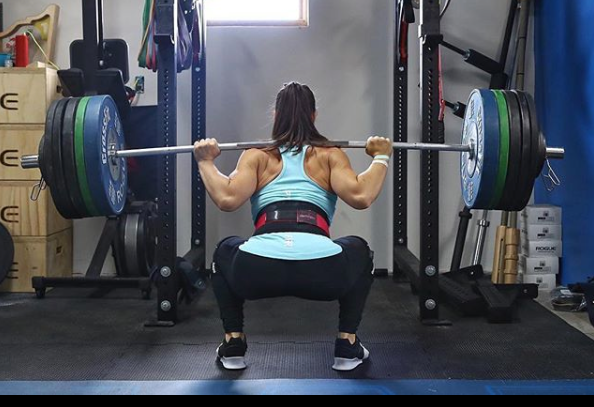

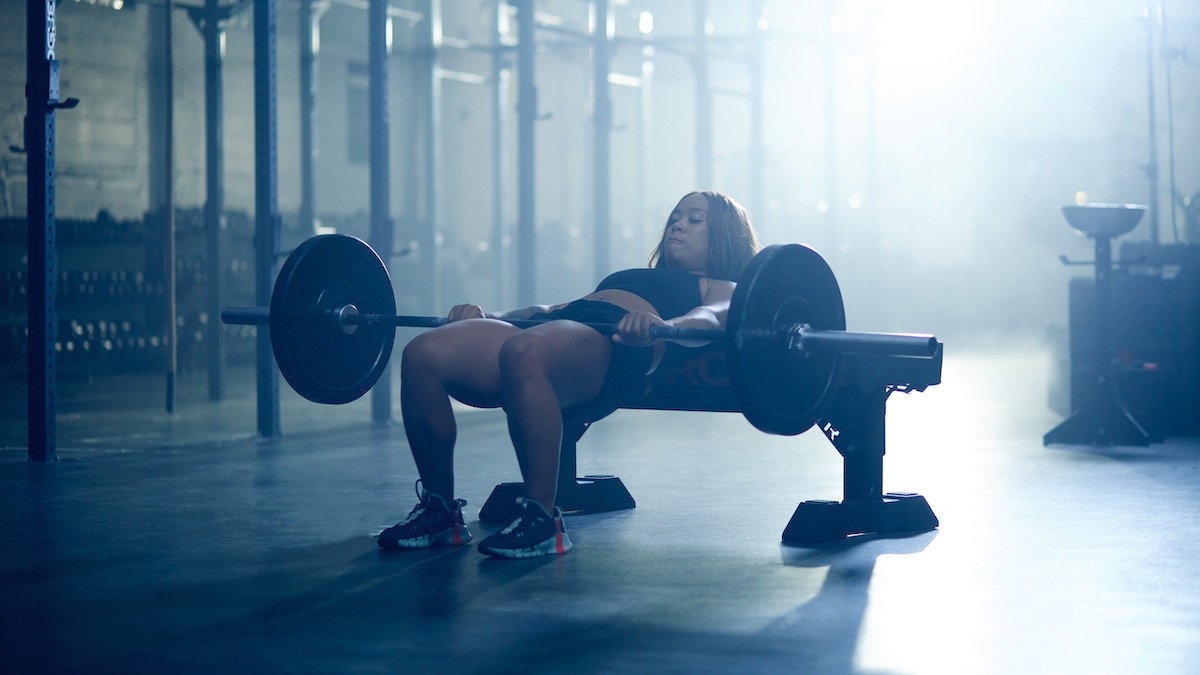
These regimens such as the above video can augment jumping, sprinting or track training. Numerous studies have demonstrated that performing
some conditioning exercises at maximum or near-maximal intensities can improve sports performance immediately, assuming ample recovery
time. PAP is the common moniker for the phenomenon being studied. Its application in sports has grown due to leaping advances (Suchomel et
al., 2016; Tillin & Bishop, 2009) and sprinting (Seitz & Haff, 2016).
Which Exercises are Most Beneficial?
Numerous studies have studied various potentiation complex settings, focusing on exercise type, volume, and intensity as a CA. The largest
PAPE impact was observed 5-7 minutes after low volume CA (1-3 sets) with high resistance (>85% 1RM) (Krzysztofik et al., 2021; Seitz &
Haff, 2016; Wilson et al., 2013). Despite the similar movement pattern of CA and subsequent exercise (Gołaś et al., 2016), most studies used
bilateral CAs to induce PAPE, despite most sports tasks being performed unilaterally (Krzysztofik et al., 2021; Seitz & Haff, 2016;
Wilson et al., 2013).
Potentiation and exhaustion must be considered when using PAPE as an intervention. Rugby is a repeat sprint event, so a protocol must be altered to maximise sprint performance without overexerting an athlete (Bevan et al., 2010; Rassier & Macintosh, 2000).
While potentiation and fatigue are present simultaneously, fatigue declines faster. According to Tillin and Bishop (2009), Effective recovery can reduce fatigue and boost muscle performance. Insufficient rest can cause muscle tiredness and poor performance (Bevan et al., 2010). Professional Rugby players have better acceleration, speed, strength, and power than semi-professional and amateur players (Barr et al., 2014; Duthie et al., 2003; Mujika et al., 2009; Smart et al., 2013), thus finding optimal PAP strategies to enhance speed would be crucial.
Studies have shown that previous contractile activity, such as dynamic contractions or isometric maximum voluntary contractions (MVC), might improve athletic performance. The study by Till and Cooke (2009) incorporated vertical jumps as a means to assess enhanced performance measures, whilst Radcliffe and Radcliffe (1996) utilised horizontal jumps in their research to evaluate performance enhancements. Additionally, French et al. (2003) employed drop jumps as another measure of enhanced performance.
The current body of knowledge regarding the impact of PAP on sprint performance is relatively limited. In a study conducted by McBride et
al. (2005), implementing a dynamic PAPE improved 40-meter sprint performance by 0.87%. Participants performed three sets of back squats
at 90% of their 1RM to improve. Despite the many PAPE procedures, it is difficult to determine which are the most successful and at what
intensities and approaches.
Enhancements in short-distance sprint trials like the above video were likewise documented subsequent to the completion of 10 sets of 1 repetition of back squats at 90% of one's maximum repetition (1RM), as reported by Chatzopoulos et al. (2007). Furthermore, Yetter and Moir (2008) observed similar improvements in short-distance sprint trials through the implementation of progressive sets of submaximal intensity back squats, ranging from 30% to 70% of one's 1RM. Previous studies have yielded varying outcomes regarding the impact of PAP on sprint performances. McBride et al. (2009) reported mixed results, while Till and Cooke (2009) found no significant effect of PAP on sprint performances.
What are PAP protocols that Involve Multijoint, Single Joint, Bilateral and Unilateral Techniques?
One of the primary reasons for selecting this topic is to determine whether there is a superior protocol for PAP and to distinguish between multi joint, single joint, bilateral, and unilateral protocols. This requires consideration of the muscle contraction generated by the PAP technique. The majority of research on sprinting has employed dynamic PAP protocols (Bevan et al., 2010; Chatzopoulos et al., 2007; Comyns et al., 2010; Linder et al., 2010; Till & Cooke, 2009; Yetter & Moir, 2008). Alternatively, Requena et al. (2011) and Till and Cooke (2009) have employed a single-joint isometric knee extension protocol. The findings were that isometric contractions elicit a higher recruitment of muscle fibres compared to dynamic contractions, perhaps leading to a higher degree of regulatory light chain phosphorylation and more pronounced alterations in muscle architecture (Requena et al., 2011; Till & Cooke, 2009).
It has been proposed that dynamic contractions tend to cause peripheral fatigue to set in quicker compared to isometric contractions (Babault et al., 2006; Kay et al., 2000; Newham et al., 1995; Ryschon et al., 1997; Tillin & Bishop, 2009), due to the build-up of lactate (Karelis et al., 2004). When players confront a high frequency of competitive engagements, it may be smart to consider using isometric workouts as a potential alternative for certain dynamic activities within an athlete's training regime. There is currently no consensus on whether an isometric or dynamic PAP method is beneficial for improving performance. The sparse number of research studies that specifically compare these two contraction kinds contributes to this lack of clarity. Furthermore, there is a significant discrepancy in the data on whether unilateral or bilateral isometric contractions are preferable.
Rixon et al. (2007) discovered that performing three seconds of isometric maximal voluntary contraction (MVC) back squats resulted in a 2.9% increase in countermovement jump height. However, no improvement in countermovement jump height was detected after executing a 3-repetition maximum (3RM) dynamic back squat exercise. However, it is crucial to highlight that the two interventions are difficult to match in terms of volume/frequency, which makes comparing the PAP effects problematic. Hence, it is essential to ascertain if isometric contraction surpasses dynamic contraction in its efficacy to induce the PAP impact on future sprint performance.
The findings imply that integrating an isometric MVC protocol that involves several joints, as opposed to a single-joint MVC strategy, might potentially improve the efficacy of warm-up routines for maximising sprinting performance. Motor unit recruitment differs in single-joint and multi-joint activities, resulting in differences in activation patterns that may alter future PAP effects (Young & Elliott, 2001).
Isometric Training:
Isometric strength training (IST) has been documented as an effective method for enhancing isometric force production at the specific joint
angle targeted during training (Kitai & Sale, 1989; Tillin et al., 2011). Additionally, it has been observed that IST does not have a
significant impact on isometric force production at joint angles that were not included in the training intervention (Noorkõiv et al.,
2014).
Research indicates that IST enhances angle-specific strength to a greater extent when compared to conventional dynamic strength training
protocols (Kitai & Sale, 1989; Lee et al., 2018; Lum & Barbosa, 2019; Lum et al., 2022; Tillin et al., 2011). However, it must be
noted that these studies are from longitudinal data. The back squat is the most researched PAP intervention which is shown in the
video below for sprint performance, maybe because to the dynamic correlation of the triple extension phase movement (Verkhoshansky &
Siff, 2009). Most studies have used 70% 1RM as the back squat intensity, Crewther et al. (2011) found no significant effect of back squat
on sprint performance between 5 and 100m, while other studies had mixed interpretations (Bevan et al., 2010; Comyns et al., 2010; Lim &
Kong, 2013; Wyland et al., 2015) and reported improved performance (Chatzopoulos et al., 2007; Linder et al., 2010; McBride et al., 2005;
Seitz et al., 2014; Yetter & Moir, 2008).
Comyns et al. (2010) investigated the impact of repeated 3RM back squats 4 minutes before 30 m sprints. Sprint time, instantaneous, average,
and maximal velocity were measured four times after the back-squat procedure. In the first session, the 30-meter time rose 1.4%, maximum
velocity dropped 2%, and average velocity dropped 1.3% compared to baseline readings. The study found no statistically significant sprint
measure gains across testing days. The authors found significant variations in instantaneous velocity at 20 and 30 metres between session 1
and 4. The results show that athletes may need frequent preload stimulus exposure to benefit. Similar findings were also observed by
Yetter and Moir (2008). According to research, back squats at 90% of 1RM for three repetitions can immediately improve sprint
performance from 5 to 40 metres. These improvements depend on athletes getting enough rest, usually 4–8 minutes (Healy & Comyns, 2017).
Physiological Mechanisms of PAPE:
Multiple mechanisms have been proposed to explain the phenomenon of PAP such as neural adaptations (Duchateau et al., 2021) and structural modifications (Morton et al., 2019). In summary, it has been observed that neural adaptations can manifest through; enhanced motor unit recruitment, synchronisation, firing rate, as well as reduced neuromuscular inhibition. Additionally, changes in muscle architecture, such as fascicle elongation and/or fascicle angle widening (Coratella et al., 2022) along with the phosphorylation of myosin regulatory light chains (Tillin & Bishop, 2009). Furthermore, the reinforcement of the muscle-tendon complex has been identified as another aspect of structural adaptations (Tumkur Anil Kumar et al., 2021)
Coaches must be aware of the aspects that affect back squat PAP regimens. These include the athlete's strength and squat depth. Squat volume and rest length will vary across athletes. Multiple investigations have shown that PAP response is highly personalised (Lim & Kong, 2013; Till & Cooke, 2009). Thus, standard group statistics may not reliably detect PAP's favourable benefits (Comyns et al., 2010; Harrison, 2011; Whelan et al., 2014).
Thanks for reading.... Chris
References
Babault, N., Desbrosses, K., Fabre, M. S., Michaut, A., & Pousson, M. (2006, Mar). Neuromuscular fatigue development during maximal concentric and isometric knee extensions. J Appl Physiol (1985), 100(3), 780-785. https://doi.org/10.1152/japplphysiol.00737.2005
Baker, D. (2002, Nov). Differences in strength and power among junior-high, senior-high, college-aged, and elite professional rugby league players. J Strength Cond Res, 16(4), 581-585.
Barr, M. J., Sheppard, J. M., Gabbett, T. J., & Newton, R. U. (2014, Oct). Long-term training-induced changes in sprinting speed and sprint momentum in elite rugby union players. J Strength Cond Res, 28(10), 2724-2731. https://doi.org/10.1519/jsc.0000000000000364
Bevan, H. R., Cunningham, D. J., Tooley, E. P., Owen, N. J., Cook, C. J., & Kilduff, L. P. (2010, Mar). Influence of postactivation potentiation on sprinting performance in professional rugby players. J Strength Cond Res, 24(3), 701-705. https://doi.org/10.1519/JSC.0b013e3181c7b68a
Chatzopoulos, D. E., Michailidis, C. J., Giannakos, A. K., Alexiou, K. C., Patikas, D. A., Antonopoulos, C. B., & Kotzamanidis, C. M. (2007, Nov). Postactivation potentiation effects after heavy resistance exercise on running speed. J Strength Cond Res, 21(4), 1278-1281. https://doi.org/10.1519/r-21276.1
Comyns, T. M., Harrison, A. J., & Hennessy, L. K. (2010, Mar). Effect of squatting on sprinting performance and repeated exposure to complex training in male rugby players. J Strength Cond Res, 24(3), 610-618. https://doi.org/10.1519/JSC.0b013e3181c7c3fc
Coratella, G., Beato, M., Bertinato, L., Milanese, C., Venturelli, M., & Schena, F. (2022, Nov 1). Including the Eccentric Phase in Resistance Training to Counteract the Effects of Detraining in Women: A Randomized Controlled Trial. J Strength Cond Res, 36(11), 3023-3031. https://doi.org/10.1519/jsc.0000000000004039
Crewther, B. T., Kilduff, L. P., Cook, C. J., Middleton, M. K., Bunce, P. J., & Yang, G. Z. (2011, Dec). The acute potentiating effects of back squats on athlete performance. J Strength Cond Res, 25(12), 3319-3325. https://doi.org/10.1519/JSC.0b013e318215f560
Duchateau, J., Stragier, S., Baudry, S., & Carpentier, A. (2021). Strength training: in search of optimal strategies to maximize neuromuscular performance. Exercise and sport sciences reviews, 49(1), 2-14.
Duthie, G., Pyne, D., & Hooper, S. (2003). Applied physiology and game analysis of rugby union. Sports Med, 33(13), 973-991. https://doi.org/10.2165/00007256-200333130-00003
French, D. N., Kraemer, W. J., & Cooke, C. B. (2003, Nov). Changes in dynamic exercise performance following a sequence of preconditioning isometric muscle actions. J Strength Cond Res, 17(4), 678-685. https://doi.org/10.1519/1533-4287(2003)017<0678:cidepf>2.0.co;2
Gabbett, T., King, T., & Jenkins, D. (2008). Applied physiology of rugby league. Sports Med, 38(2), 119-138. https://doi.org/10.2165/00007256-200838020-00003
Harrison, A. J. (2011, Sep). Throwing and catching movements exhibit post-activation potentiation effects following fatigue. Sports Biomech, 10(3), 185-196. https://doi.org/10.1080/14763141.2011.592544
Healy, R., & Comyns, T. (2017, 02/01). Application of Postactivation Potentiation Methods to Improve Sprint Speed. Strength and conditioning journal, 39, 1-9. https://doi.org/10.1519/SSC.0000000000000276
Karelis, A. D., Marcil, M., Péronnet, F., & Gardiner, P. F. (2004, Jun). Effect of lactate infusion on M-wave characteristics and force in the rat plantaris muscle during repeated stimulation in situ. J Appl Physiol (1985), 96(6), 2133-2138. https://doi.org/10.1152/japplphysiol.00037.2004
Kay, D., St Clair Gibson, A., Mitchell, M. J., Lambert, M. I., & Noakes, T. D. (2000, Dec). Different neuromuscular recruitment patterns during eccentric, concentric and isometric contractions. J Electromyogr Kinesiol, 10(6), 425-431. https://doi.org/10.1016/s1050-6411(00)00031-6
Kitai, T. A., & Sale, D. G. (1989). Specificity of joint angle in isometric training. Eur J Appl Physiol Occup Physiol, 58(7), 744-748. https://doi.org/10.1007/bf00637386
Lee, S. E. K., de Lira, C. A. B., Nouailhetas, V. L. A., Vancini, R. L., & Andrade, M. S. (2018). Do isometric, isotonic and/or isokinetic strength trainings produce different strength outcomes? Journal of bodywork and movement therapies, 22(2), 430-437.
Lim, J. J., & Kong, P. W. (2013, Oct). Effects of isometric and dynamic postactivation potentiation protocols on maximal sprint performance. J Strength Cond Res, 27(10), 2730-2736. https://doi.org/10.1519/JSC.0b013e3182815995
Linder, E. E., Prins, J. H., Murata, N. M., Derenne, C., Morgan, C. F., & Solomon, J. R. (2010, May). Effects of preload 4 repetition maximum on 100-m sprint times in collegiate women. J Strength Cond Res, 24(5), 1184-1190. https://doi.org/10.1519/JSC.0b013e3181d75806
Lum, D., & Barbosa, T. M. (2019, Nov 1). Effects of Strength Training on Olympic Time-Based Sport Performance: A Systematic Review and Meta-Analysis of Randomized Controlled Trials. Int J Sports Physiol Perform, 14(10), 1318-1330. https://doi.org/10.1123/ijspp.2019-0329
Lum, D., Comfort, P., Barbosa, T. M., & Balasekaran, G. (2022). Comparing the effects of plyometric and isometric strength training on dynamic and isometric force-time characteristics. Biology of Sport, 39(1), 189-197.
McBride, J. M., Blow, D., Kirby, T. J., Haines, T. L., Dayne, A. M., & Triplett, N. T. (2009, Sep). Relationship between maximal squat strength and five, ten, and forty yard sprint times. J Strength Cond Res, 23(6), 1633-1636. https://doi.org/10.1519/JSC.0b013e3181b2b8aa
McBride, J. M., Nimphius, S., & Erickson, T. M. (2005, Nov). The acute effects of heavy-load squats and loaded countermovement jumps on sprint performance. J Strength Cond Res, 19(4), 893-897. https://doi.org/10.1519/r-16304.1
Morton, R. W., Colenso-Semple, L., & Phillips, S. M. (2019). Training for strength and hypertrophy: an evidence-based approach. Current Opinion in Physiology, 10, 90-95.
Mujika, I., Santisteban, J., Impellizzeri, F. M., & Castagna, C. (2009, Jan 15). Fitness determinants of success in men's and women's football. J Sports Sci, 27(2), 107-114. https://doi.org/10.1080/02640410802428071
Newham, D. J., Jones, D. A., Turner, D. L., & McIntyre, D. (1995, Nov 1). The metabolic costs of different types of contractile activity of the human adductor pollicis muscle. J Physiol, 488 ( Pt 3)(Pt 3), 815-819. https://doi.org/10.1113/jphysiol.1995.sp021013
Noorkõiv, M., Nosaka, K., & Blazevich, A. J. (2014, Aug). Neuromuscular adaptations associated with knee joint angle-specific force change. Med Sci Sports Exerc, 46(8), 1525-1537. https://doi.org/10.1249/mss.0000000000000269
Radcliffe, J. C., & Radcliffe, J. L. (1996). EFFECTS OF DIFFERENT WARM-UP PROTOCOLS ON PEAK POWER OUTPUT DURING A SINGLE RESPONSE JUMP TASK 1127. Medicine & Science in Sports & Exercise, 28(5), 189. https://journals.lww.com/acsm-msse/Fulltext/1996/05001/EFFECTS_OF_DIFFERENT_WARM_UP_PROTOCOLS_ON_PEAK.1125.aspx
Rassier, D. E., & Macintosh, B. R. (2000, May). Coexistence of potentiation and fatigue in skeletal muscle. Braz J Med Biol Res, 33(5), 499-508. https://doi.org/10.1590/s0100-879x2000000500003
Requena, B., Sáez-Sáez de Villarreal, E., Gapeyeva, H., Ereline, J., García, I., & Pääsuke, M. (2011, Feb). Relationship between postactivation potentiation of knee extensor muscles, sprinting and vertical jumping performance in professional soccer players. J Strength Cond Res, 25(2), 367-373. https://doi.org/10.1519/JSC.0b013e3181be31aa
Rixon, K. P., Lamont, H. S., & Bemben, M. G. (2007, May). Influence of type of muscle contraction, gender, and lifting experience on postactivation potentiation performance. J Strength Cond Res, 21(2), 500-505. https://doi.org/10.1519/r-18855.1
Ryschon, T., Fowler, M., Wysong, R., Anthony, A.-R., & Balaban, R. (1997). Efficiency of human skeletal muscle in vivo: comparison of isometric, concentric, and eccentric muscle action. Journal of applied physiology, 83(3), 867-874.
Seitz, L. B., & Haff, G. G. (2016, Feb). Factors Modulating Post-Activation Potentiation of Jump, Sprint, Throw, and Upper-Body Ballistic Performances: A Systematic Review with Meta-Analysis. Sports Med, 46(2), 231-240. https://doi.org/10.1007/s40279-015-0415-7
Seitz, L. B., Trajano, G. S., & Haff, G. G. (2014, Jul). The back squat and the power clean: elicitation of different degrees of potentiation. Int J Sports Physiol Perform, 9(4), 643-649. https://doi.org/10.1123/ijspp.2013-0358
Smart, D. J., Hopkins, W. G., & Gill, N. D. (2013). Differences and Changes in the Physical Characteristics of Professional and Amateur Rugby Union Players. The Journal of Strength & Conditioning Research, 27(11), 3033-3044. https://doi.org/10.1519/JSC.0b013e31828c26d3
Suchomel, T. J., Lamont, H. S., & Moir, G. L. (2016, Jun). Understanding Vertical Jump Potentiation: A Deterministic Model. Sports Med, 46(6), 809-828. https://doi.org/10.1007/s40279-015-0466-9
Till, K. A., & Cooke, C. (2009, Oct). The effects of postactivation potentiation on sprint and jump performance of male academy soccer players. J Strength Cond Res, 23(7), 1960-1967. https://doi.org/10.1519/JSC.0b013e3181b8666e
Tillin, N. A., & Bishop, D. (2009). Factors modulating post-activation potentiation and its effect on performance of subsequent explosive activities. Sports Med, 39(2), 147-166. https://doi.org/10.2165/00007256-200939020-00004
Tillin, N. A., Pain, M. T., & Folland, J. P. (2011, Mar). Short-term unilateral resistance training affects the agonist-antagonist but not the force-agonist activation relationship. Muscle Nerve, 43(3), 375-384. https://doi.org/10.1002/mus.21885
Tumkur Anil Kumar, N., Oliver, J. L., Lloyd, R. S., Pedley, J. S., & Radnor, J. M. (2021). The influence of growth, maturation and resistance training on muscle-tendon and neuromuscular adaptations: A narrative review. Sports, 9(5), 59.
Verkhoshansky, Y., & Siff, M. (2009). Supertraining: Verkhoshansky SSTM.
Whelan, N., OʼRegan, C., & Harrison, A. J. (2014, Jul). Resisted sprints do not acutely enhance sprinting performance. J Strength Cond Res, 28(7), 1858-1866. https://doi.org/10.1519/jsc.0000000000000357
Wyland, T. P., Van Dorin, J. D., & Reyes, G. F. (2015, Nov). Postactivation Potentation Effects From Accommodating Resistance Combined With Heavy Back Squats on Short Sprint Performance. J Strength Cond Res, 29(11), 3115-3123. https://doi.org/10.1519/jsc.0000000000000991
Yetter, M., & Moir, G. L. (2008, Jan). The acute effects of heavy back and front squats on speed during forty-meter sprint trials. J Strength Cond Res, 22(1), 159-165. https://doi.org/10.1519/JSC.0b013e31815f958d
Young, W., & Elliott, S. (2001, Sep). Acute effects of static stretching, proprioceptive neuromuscular facilitation stretching, and maximum voluntary contractions on explosive force production and jumping performance. Res Q Exerc Sport, 72(3), 273-279. https://doi.org/10.1080/02701367.2001.10608960

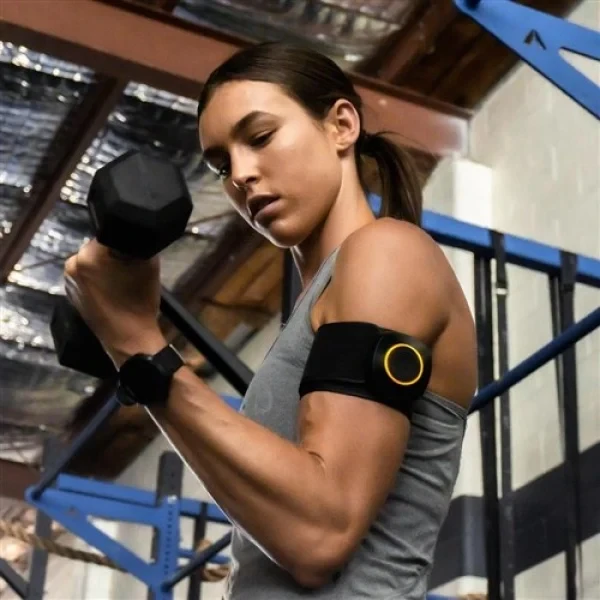
.jpg)